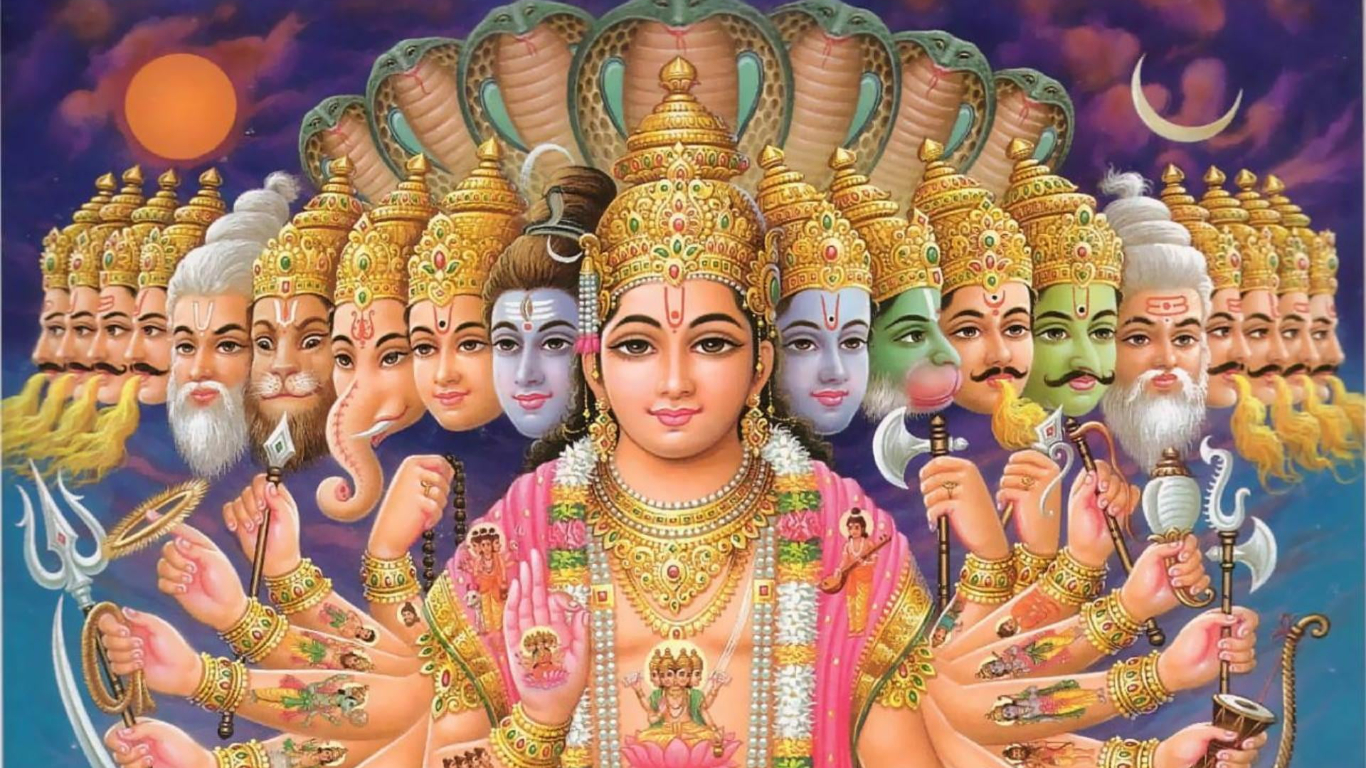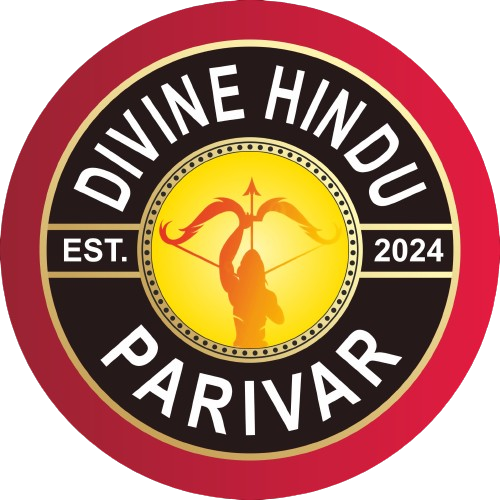
“Narayana” is a term in Hinduism that is often used to refer to the Supreme Cosmic Being or the Ultimate Reality. It is a name for the preserver aspect of the divine, and it is closely associated with the god Vishnu. The term “Narayana” is derived from two words: “Nara,” which means “human,” and “Ayana,” which means “shelter” or “refuge.” Therefore, Narayana can be understood as the refuge or shelter of all beings.
Vishnu, one of the principal deities in Hinduism, is often referred to as Narayana. According to Hindu theology, Vishnu incarnates in various forms (avatars) to maintain cosmic order and protect dharma (righteousness). In this role, Vishnu is the preserver and sustainer of the universe.
The concept of Narayana goes beyond a specific deity and encompasses the idea of the all-pervading, transcendent, and immanent reality in Hindu philosophy. It reflects the understanding that the divine is present in all aspects of creation and is the ultimate source of everything.
The Bhagavad Gita, a sacred Hindu scripture, also refers to Narayana. In Chapter 15, Verse 19, Lord Krishna (an avatar of Vishnu) says, “I am the goal, the sustainer, the master, the witness, the abode, the refuge, and the most dear friend. I am the creation and the annihilation, the basis of everything, the resting place, and the eternal seed.”
In summary, Narayana is a significant concept in Hinduism, representing the Supreme Being, often identified with Vishnu, who is the preserver and protector of the universe.
Garutman or Garuda, the mighty bird-vehicle of Lord Visnu is a minor deity invariably found in all the Vaisnava temples. He is described as the son of the sage couple Kasyapa and Vinata and as the younger brother of Aruna, the charioteer of Sun-god. The chief among his multifarious exploits is his bringing of the pot of nectar from Indra’s heaven. It is precisely this that made Lord Visnu choose him as His vehicle.
Literally, the word Garuda means ‘wings of speech’. He actually personifies Vedic knowledge. On his wings, as it were, Vedic Knowledge has come down to us, from the world of God.
The Garuda image is usually anthropomorphic. He is shown with a sharp beak, and two wings at the back. The hands may be eight or four or just two. Two of the hands are always in the adoration pose. In the others he carries the conch, wheel, mace, sword, snake and nectarpot. The image is usually installed right opposite the central shrine.
It may appear to be rather intriguing that Lord Visnu has a serpent as his couch and an eagle, its arch enemy, as his vehicle! This is to show that he is the Lord of balance and harmony which is an essential quality for one charged with the responsibility of sustaining this multifarious universe.
Another deity invariably found in the Visnu temples, especially in the South, is Hanuman the monkey-god. The Ramayana pictures him as a highly erudite, cultured and refined person. He is as strong as he is wise, and as devoted as he is strong and wise, a rare combination indeed.
He is represented in two postures: When in the company of SrI Rama, SIta and Laksmana, he is shown standing humbly at a distance or sitting devotedly at the feet of SrI Rama. In shrines specially erected for him, he strikes a heroic pose, usually with the mace in his left hand and carrying the Sanjivini mountain in his right hand.
Apart from these, it is common to show the weapons of Lord Visnu also in human form. They are then called Ayudhapurusas (weapon-beings). The Ayudhapurusa may be male, female, or neuter, depending upon the gender of the word indicating it. For instance, Gada (mace) is a female deity whereas the Cakra (discus) is a neuter deity.
The Sudarsana-cakra is shown as a person. with a hexagon as his background, brilliant as fire and having four or eight or sixteen arms holding bow, arrow, trident, noose, goad and other implements as also weapons, apart from the usual Vaisnavite symbols. It is said to represent the cosmic mind, the will of the Lord to multiply as well as His infinite power to create and destroy the universe. The Sudarsana-mantra is said to possess the power to neutralize poisons and exorcise malignant spirits.
The Kaumodaki, the Gada (mace) of Lord Visnu is depicted as a female deity, with one face and two hands which are in the posture of adoration. It symbolises power and sovereignty.
No account of Lord Visnu will be complete without mentioning about the Salagrama, a blackish rounded and polished stone with a hole containing the fossils of tiny molluses, which is worshipped as an emblem of-His. There are several varieties of them representing different aspects of the Lord. Salagramas can be installed in temples but are usually worshipped in one’s own home privately. Once it is kept at home, its worship becomes obligatory.
Garutman or Garuda, the mighty bird-vehicle of Lord Visnu is a minor deity invariably found in all the Vaisnava temples. He is described as the son of the sage couple Kasyapa and Vinata and as the younger brother of Aruna, the charioteer of Sun-god. The chief among his multifarious exploits is his bringing of the pot of nectar from Indra’s heaven. It is precisely this that made Lord Visnu choose him as His vehicle.
Literally, the word Garuda means ‘wings of speech’. He actually personifies Vedic knowledge. On his wings, as it were, Vedic Knowledge has come down to us, from the world of God.
The Garuda image is usually anthropomorphic. He is shown with a sharp beak, and two wings at the back. The hands may be eight or four or just two. Two of the hands are always in the adoration pose. In the others he carries the conch, wheel, mace, sword, snake and nectarpot. The image is usually installed right opposite the central shrine.
It may appear to be rather intriguing that Lord Visnu has a serpent as his couch and an eagle, its arch enemy, as his vehicle! This is to show that he is the Lord of balance and harmony which is an essential quality for one charged with the responsibility of sustaining this multifarious universe.
Another deity invariably found in the Visnu temples, especially in the South, is Hanuman the monkey-god. The Ramayana pictures him as a highly erudite, cultured and refined person. He is as strong as he is wise, and as devoted as he is strong and wise, a rare combination indeed.
He is represented in two postures: When in the company of SrI Rama, SIta and Laksmana, he is shown standing humbly at a distance or sitting devotedly at the feet of SrI Rama. In shrines specially erected for him, he strikes a heroic pose, usually with the mace in his left hand and carrying the Sanjivini mountain in his right hand.
Apart from these, it is common to show the weapons of Lord Visnu also in human form. They are then called Ayudhapurusas (weapon-beings). The Ayudhapurusa may be male, female, or neuter, depending upon the gender of the word indicating it. For instance, Gada (mace) is a female deity whereas the Cakra (discus) is a neuter deity.
The Sudarsana-cakra is shown as a person. with a hexagon as his background, brilliant as fire and having four or eight or sixteen arms holding bow, arrow, trident, noose, goad and other implements as also weapons, apart from the usual Vaisnavite symbols. It is said to represent the cosmic mind, the will of the Lord to multiply as well as His infinite power to create and destroy the universe. The Sudarsana-mantra is said to possess the power to neutralize poisons and exorcise malignant spirits.
The Kaumodaki, the Gada (mace) of Lord Visnu is depicted as a female deity, with one face and two hands which are in the posture of adoration. It symbolises power and sovereignty.
No account of Lord Visnu will be complete without mentioning about the Salagrama, a blackish rounded and polished stone with a hole containing the fossils of tiny molluses, which is worshipped as an emblem of-His. There are several varieties of them representing different aspects of the Lord. Salagramas can be installed in temples but are usually worshipped in one’s own home privately. Once it is kept at home, its worship becomes obligatory.
